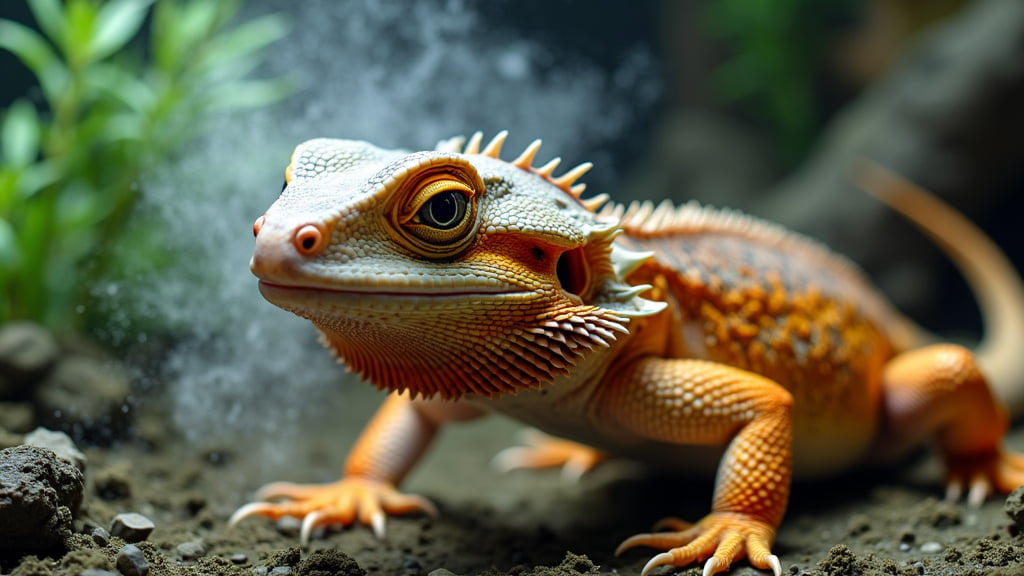Meta Description: Learn how to manage humidity in your bearded dragon’s tank effectively. Read our comprehensive guide for practical advice, expert insights, and essential tips to keep your pet healthy.
Introduction
Humidity control is a pivotal aspect of bearded dragon care that often gets overlooked by novice keepers. Maintaining the right humidity levels in your bearded dragon’s tank is essential for their health and well-being. For years as an exotic pet enthusiast, I’ve seen how crucial this factor can be. In this post, we’ll dive into the intricacies of humidity control, offering real-world advice, practical tips, and expert insights to help you create the best environment for your scaly friend.
Importance of Humidity Control
Why Humidity Matters
Bearded dragons, native to Australia’s arid regions, thrive in environments with low humidity. Ensuring that your tank replicates these conditions as closely as possible is key to keeping your pet healthy. Humidity levels that are too high can lead to respiratory infections, while levels that are too low can cause dehydration and shedding problems.
Ideal Humidity Levels
Generally, bearded dragons do well in humidity levels ranging from 20% to 40%. During the day, aim for the lower end of this spectrum, while at night, it can be slightly higher. Investing in a good hygrometer will help you monitor these levels accurately.
Tools and Techniques for Humidity Control
Choosing the Right Substrate
The substrate you use can significantly impact the humidity levels in the tank. Personally, I’ve had great success with using reptile carpet and tile, as these substrates don’t hold moisture as much as others like sand or coconut fibre.
Benefits of Reptile Carpet
- Easy to clean
- Does not retain moisture
- Safe for your bearded dragon
Benefits of Tile
- Helps maintain low humidity levels
- Provides a naturalistic look
- Durable and easy to disinfect
Proper Ventilation
Good ventilation is crucial for maintaining the correct humidity levels. Here’s how to ensure proper air circulation:
- Use a tank with a well-ventilated mesh top.
- Place the tank in a room with good air circulation.
- Avoid adding too many decorations that could trap moisture.
Some keepers even use small fans to enhance air flow, though this should be done cautiously to avoid chilling your bearded dragon.
Adjusting Humidity with Humidifiers and Dehumidifiers
If you’re struggling to maintain the right humidity levels, you might need to enlist the help of technology.
Humidifiers
Humidifiers can be helpful if your ambient household humidity tends to be very low. Place a small, reptile-safe humidifier near—but not inside—the tank to subtly adjust the levels.
Dehumidifiers
More commonly, dehumidifiers are used to lower the tank’s humidity. A small dehumidifier placed near the tank can significantly help, especially in more humid climates.
Monitoring and Troubleshooting Humidity Levels
Using a Hygrometer
A high-quality hygrometer is indispensable for keeping tabs on humidity levels. Digital hygrometers tend to be more accurate than their analogue counterparts. Place one in the cool zone and another in the basking area to get a comprehensive reading of your tank’s climate.
Regular Maintenance and Adjustments
- Daily Checks: Make it a habit to check humidity levels daily.
- Seasonal Adjustments: Be aware that seasonal changes can impact indoor humidity. Adjust your setup accordingly.
- Water Bowl Placement: The location of the water bowl can affect humidity. Placing it on the cooler side of the tank can prevent excessive evaporation.
Common Issues and Solutions
High Humidity
- Remove excess water sources
- Increase ventilation
- Use a dehumidifier
Low Humidity
- Add a small water bowl
- Mist the tank lightly (avoid overdoing it)
- Use a humidifier cautiously
Conclusion
Maintaining the right humidity levels in your bearded dragon’s tank is crucial for their health and vitality. By choosing the right substrate, ensuring proper ventilation, and using tools like hygrometers, humidifiers, and dehumidifiers wisely, you can create a comfortable and safe environment for your pet. Remember, any persistent health issues should always be referred to a qualified reptile vet.
For more in-depth insights and guides, feel free to explore our other bearded dragon care articles or consult external sources like this comprehensive care sheet from Reptiles Magazine.
By following these steps, you’ll be well on your way to becoming a bearded dragon humidity control expert. Happy herping!

